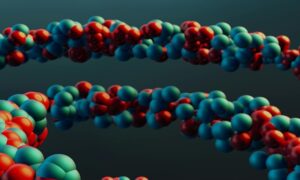Pain management has seen a profound transformation in recent years, driven by advancements in regenerative medicine and cutting-edge technology. Once reliant solely on medications and invasive procedures, the field now offers innovative, minimally invasive treatments that promote healing and restore function. This article explores the integration of regenerative medicine and technology, showcasing how these advancements are revolutionizing the management of chronic and acute pain.
The Need for Innovation in Pain Management
Chronic pain affects an estimated 20% of the global population, making it a leading cause of disability. Traditional approaches, such as opioid medications and surgical interventions, often come with significant risks, including addiction, side effects, and extended recovery times. This has spurred the development of alternatives like regenerative medicine, which leverages the body’s innate healing abilities, and technology, which enhances the precision and effectiveness of treatments.
What Is Regenerative Medicine?
Regenerative medicine focuses on repairing or replacing damaged tissues to restore normal function. It employs techniques like stem cell therapy, platelet-rich plasma (PRP) therapy, and growth factor injections to stimulate the body’s natural healing processes. In pain management, regenerative medicine is particularly promising for conditions like arthritis, tendon injuries, and degenerative disc disease.
Key Components of Regenerative Medicine:
1.Stem Cell Therapy
•Uses mesenchymal stem cells (MSCs) derived from bone marrow, adipose tissue, or umbilical cords to regenerate damaged tissues.
•Commonly applied in joint pain, cartilage repair, and spinal conditions.
2.Platelet-Rich Plasma (PRP) Therapy
•Involves extracting a patient’s blood, concentrating the platelets, and injecting them into the injured area.
•Effective in treating tendon injuries, ligament sprains, and osteoarthritis.
3.Exosomes and Growth Factors
•Cellular byproducts like exosomes carry signaling molecules that promote tissue repair and reduce inflammation.
Regenerative medicine’s ability to address the root cause of pain, rather than merely mask symptoms, has made it a cornerstone of modern pain management.
The Role of Technology in Enhancing Regenerative Medicine
While regenerative therapies are inherently powerful, technology amplifies their potential by improving precision, efficacy, and accessibility. Here’s how technology is reshaping pain management:
1. Advanced Imaging Techniques
•Ultrasound-Guided Injections: Real-time imaging ensures that regenerative therapies are delivered directly to the damaged tissue, maximizing effectiveness.
•MRI and CT Scans: Allow for detailed diagnosis and tracking of healing progress post-treatment.
2. 3D Bioprinting
•This emerging technology enables the creation of bioengineered tissues, such as cartilage or tendons, to replace severely damaged structures.
•Combines regenerative medicine with custom, patient-specific solutions.
3. Robotics in Pain Management
•Robotic systems assist in the precise delivery of stem cells or PRP injections.
•Enable minimally invasive procedures with greater accuracy, reducing recovery times.
4. AI and Data Analytics
•Artificial intelligence predicts patient outcomes and identifies the most effective treatment protocols based on vast datasets.
•AI-driven platforms monitor patient recovery, adjusting therapies in real time for optimal results.
5. Wearable Technology
•Devices like smart braces and biofeedback systems track patient progress, providing continuous data on movement, pain levels, and healing.
•Enables personalized rehabilitation programs.
6. Shockwave Therapy
•High-energy acoustic waves stimulate tissue regeneration and reduce pain.
•Often used alongside regenerative medicine for musculoskeletal conditions like plantar fasciitis and tendonitis.
Shockwave therapy is a non-invasive treatment that uses acoustic waves to stimulate tissue repair and reduce pain, making it effective for conditions like plantar fasciitis and tendonitis.It also shows promise in enhancing blood flow for erectile dysfunction (ED). Shockwave Therapy is also available near you, as there are clinics around the United States that offer it, often at different prices.
Applications of Regenerative Medicine and Technology in Pain Management
1. Orthopedic Conditions
•Knee Osteoarthritis: Stem cell and PRP therapies have shown significant success in reducing inflammation and regenerating cartilage.
•Tendon Injuries: Technologies like ultrasound-guided PRP injections help heal chronic tendinitis without surgery.
2. Spinal Pain
•Regenerative therapies are transforming the treatment of degenerative disc disease by restoring disc integrity and reducing nerve impingement.
•Minimally invasive procedures using robotics improve outcomes for patients with sciatica or herniated discs.
3. Sports Injuries
•Athletes benefit from rapid recovery using PRP and stem cell therapies, combined with shockwave technology to accelerate tissue healing.
4. Neuropathic Pain
•Technologies like spinal cord stimulators work synergistically with regenerative medicine to address chronic nerve pain.
5. Post-Surgical Recovery
•Regenerative therapies, complemented by wearable devices, reduce recovery time and improve functional outcomes after surgery.
The Benefits of Integration
The fusion of regenerative medicine and technology offers several distinct advantages over traditional pain management approaches:
•Minimally Invasive: Reduces the need for surgery and its associated risks.
•Faster Recovery: Promotes natural healing, enabling patients to resume normal activities more quickly.
•Sustainable Results: Addresses the root cause of pain, reducing the likelihood of recurrence.
•Personalized Care: Advanced imaging and AI ensure tailored treatment plans for each patient.
•Reduced Dependency on Medications: Minimizes the need for opioids and other painkillers, reducing the risk of addiction.
Challenges and Future Directions
Despite its promise, the integration of regenerative medicine and technology in pain management faces challenges:
•Cost: Treatments like stem cell therapy and advanced imaging can be expensive, limiting access for some patients.
•Regulatory Hurdles: The use of regenerative products is still subject to strict regulatory oversight in many countries.
•Standardization: Variability in treatment protocols and outcomes remains a concern.
Future advancements may include:
•The development of more affordable regenerative therapies.
•Expanded use of AI to refine treatment protocols.
•Greater collaboration between technology developers, healthcare providers, and regulatory bodies.
Conclusion
The integration of regenerative medicine and technology is transforming pain management, offering hope to millions suffering from chronic and acute pain. By combining the body’s natural healing mechanisms with technological precision, these advancements provide sustainable, effective, and personalized solutions. As the field continues to evolve, the potential for improving patient outcomes and quality of life is immense.



































